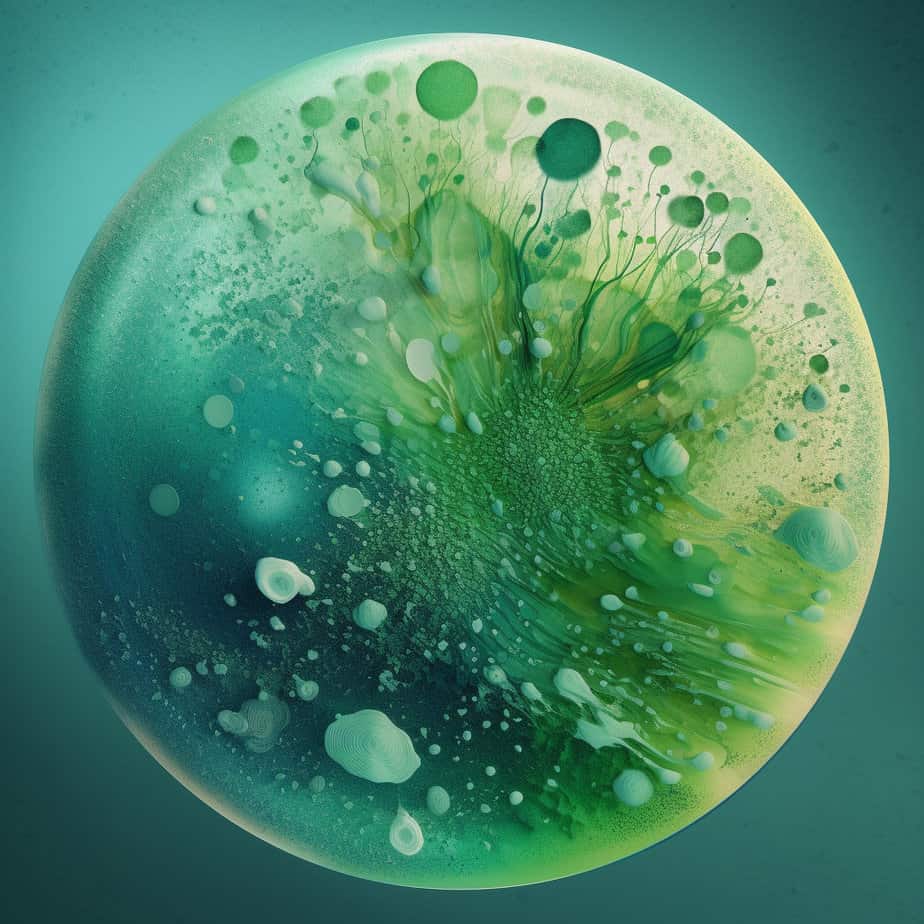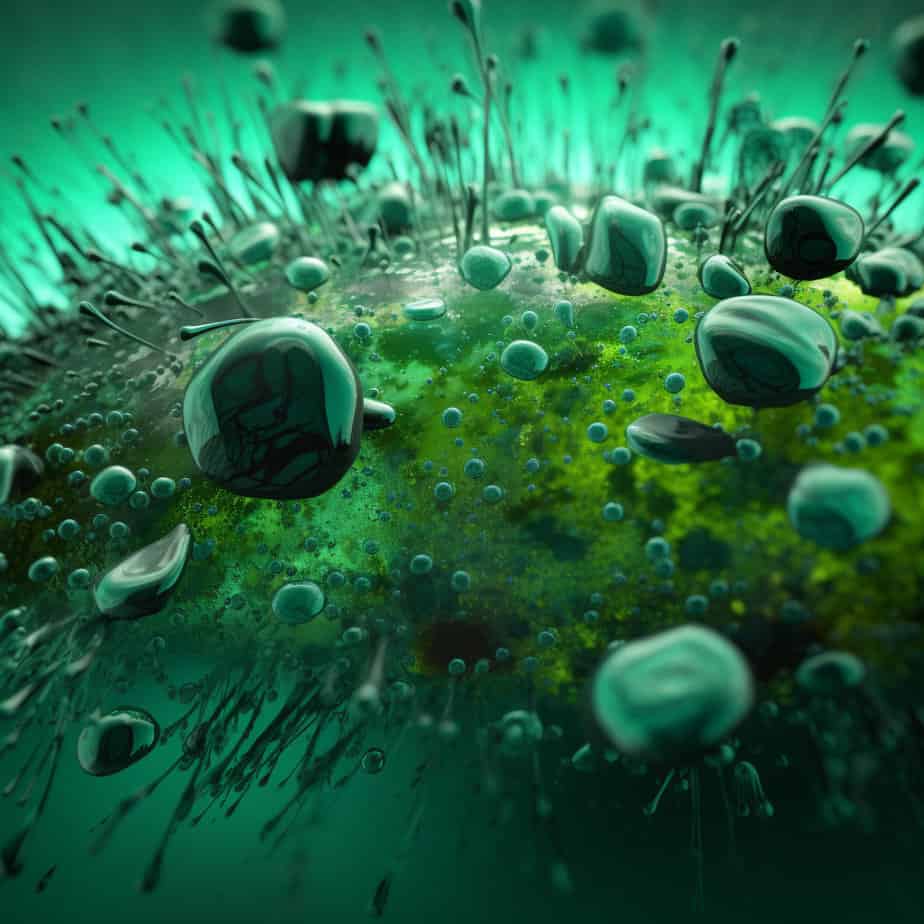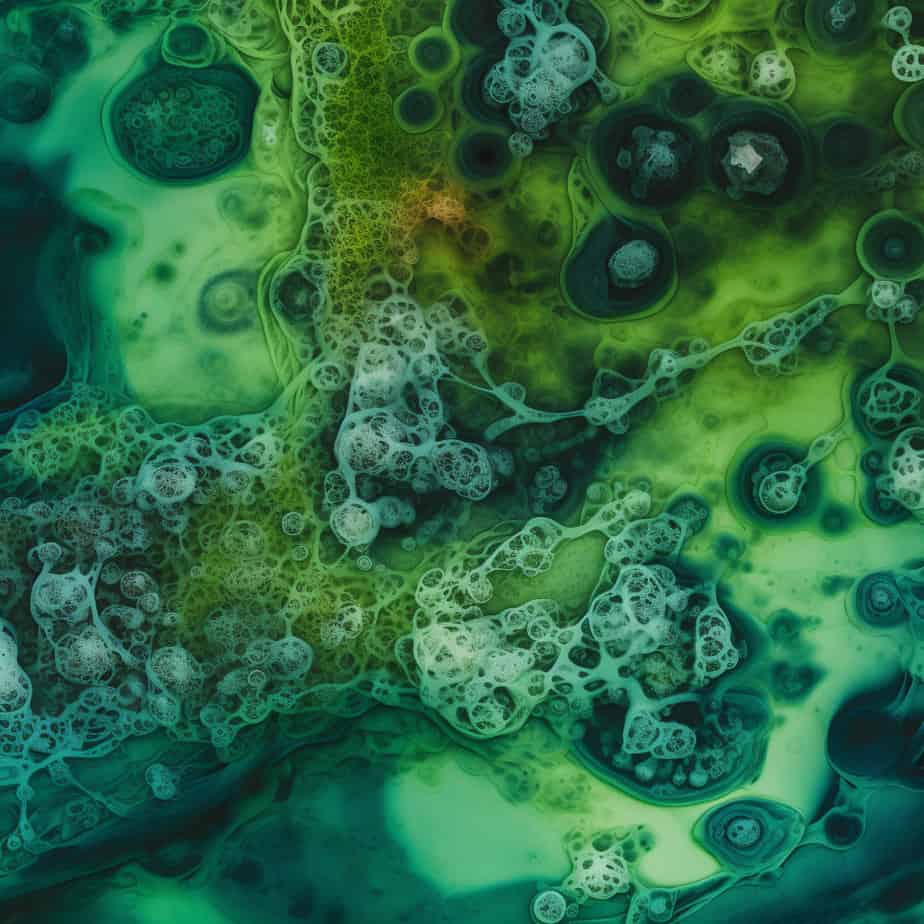Phytoplankton, the microscopic plants that inhabit the world’s oceans, play a crucial role in marine ecosystems. They are responsible for producing a significant portion of the Earth’s oxygen and form the base of the marine food chain. However, these tiny organisms are not immune to the effects of their environment. One key factor that can greatly impact phytoplankton growth and distribution is salinity, the measure of salt concentration in water. Salinity levels can vary widely in different parts of the ocean, and this variability can have profound effects on the physiology and behavior of phytoplankton. In this article, we will explore how salinity affects phytoplankton and delve into the mechanisms behind these effects. We will also discuss the implications of these interactions for the overall health and functioning of marine ecosystems. So, let’s dive in and explore the fascinating relationship between salinity and phytoplankton!
Key Takeaways
- Salinity levels in water can significantly impact the growth and distribution of phytoplankton.
- High salinity can inhibit phytoplankton growth, leading to reduced primary productivity and biodiversity.
- Low salinity can also negatively affect phytoplankton, limiting their ability to photosynthesize and reproduce.
- Changes in salinity due to climate change or human activities can have profound effects on marine ecosystems and food webs.
Understanding Phytoplankton: The Foundation of Aquatic Life

A. What is Phytoplankton?
Phytoplankton are microscopic, single-celled organisms that form the base of the aquatic food chain. These tiny organisms, which include algae and cyanobacteria, are found in both freshwater and marine environments. Despite their small size, phytoplankton play a crucial role in sustaining life in aquatic ecosystems.
Phytoplankton are photosynthetic, meaning they use sunlight to convert carbon dioxide and nutrients into organic matter through the process of photosynthesis. This process releases oxygen into the water, contributing to the oxygen levels necessary for the survival of other marine organisms. In fact, phytoplankton are responsible for producing about half of the oxygen in the Earth’s atmosphere.
B. The Role of Phytoplankton in Aquatic Ecosystems
Phytoplankton serve as the primary producers in aquatic ecosystems, forming the foundation of the food chain. They provide a vital source of energy and nutrients for a wide range of organisms, including zooplankton, small fish, and even larger marine mammals.
These microscopic organisms are not only important for sustaining marine life, but they also play a crucial role in regulating the Earth’s climate. Through photosynthesis, phytoplankton absorb carbon dioxide from the atmosphere, helping to mitigate the effects of climate change by acting as a carbon sink.
Additionally, phytoplankton are sensitive indicators of environmental changes, including variations in salinity levels. Salinity refers to the concentration of dissolved salts in water, and it can have a significant impact on the growth and distribution of phytoplankton.
The Impact of Salinity on Phytoplankton
Salinity levels can vary greatly in different aquatic environments, from freshwater lakes and rivers to the salty waters of the ocean. Phytoplankton have varying degrees of tolerance to salinity, and their growth and survival can be influenced by changes in salt concentration.
In freshwater environments, where salinity is low, certain species of phytoplankton thrive. These freshwater phytoplankton have adapted to low salinity conditions and are well-suited to the nutrient-rich waters found in lakes and rivers.
In contrast, marine phytoplankton are adapted to higher salinity levels found in the ocean. These organisms have evolved mechanisms to maintain their internal salt balance and withstand the osmotic pressure caused by the higher salt concentration in seawater.
However, some marine phytoplankton species are more tolerant to fluctuations in salinity than others. Changes in salinity can affect the availability of nutrients, the osmotic balance of the cells, and the competition between different phytoplankton species. These factors can influence the composition and productivity of phytoplankton communities in marine ecosystems.
Understanding Salinity and Phytoplankton Diversity
Salinity plays a crucial role in shaping the diversity of phytoplankton species in different aquatic environments. In areas where salinity levels are relatively stable, such as the open ocean, a few dominant species of marine phytoplankton tend to thrive. These species have adapted to the specific conditions of the marine environment and have a competitive advantage over other phytoplankton.
In contrast, estuaries and coastal regions experience fluctuations in salinity due to the mixing of freshwater and seawater. These dynamic environments support a greater diversity of phytoplankton species, as different organisms have varying levels of salinity tolerance. Estuaries, in particular, provide a unique habitat for both freshwater and marine phytoplankton, resulting in a rich and diverse community of these microscopic organisms.
The Importance of Salinity for Phytoplankton Productivity
Phytoplankton productivity, or the rate at which these organisms convert sunlight and nutrients into organic matter, is influenced by salinity levels. Optimal salinity conditions allow phytoplankton to efficiently carry out photosynthesis and maximize their growth.
In areas with low salinity, such as freshwater lakes, phytoplankton productivity may be limited by the availability of nutrients rather than salinity itself. Nutrient-rich waters can support high levels of phytoplankton growth, leading to the formation of algal blooms.
On the other hand, in high-salinity environments like the open ocean, phytoplankton productivity can be limited by factors such as nutrient availability and light penetration. These factors, along with the competition between different phytoplankton species, determine the overall productivity and biomass of phytoplankton communities in marine ecosystems.
Conclusion
Understanding the relationship between salinity and phytoplankton is essential for comprehending the dynamics of aquatic ecosystems. Salinity levels influence the growth, distribution, and diversity of phytoplankton, which, in turn, impact the entire food chain and the Earth’s climate. By studying the effects of salinity on phytoplankton, scientists can gain valuable insights into the health and resilience of marine ecosystems, helping to inform conservation and management efforts.
The Impact of Salinity on Phytoplankton

A. Defining Salinity: Its Role in Aquatic Ecosystems
Salinity refers to the concentration of dissolved salts, such as sodium chloride, in a body of water. It is a crucial parameter that affects the overall health and functioning of aquatic ecosystems. Salinity levels can vary significantly depending on factors such as location, climate, and proximity to freshwater sources.
In marine environments, salinity is typically higher due to the presence of seawater, which has an average salinity of about 35 parts per thousand (ppt). In contrast, freshwater bodies like lakes and rivers have much lower salinity levels, usually below 0.5 ppt. Estuaries, where freshwater and saltwater mix, exhibit intermediate salinity levels.
Salinity plays a vital role in maintaining the balance of aquatic ecosystems. It affects various physical and chemical properties of water, including density, buoyancy, and conductivity. These factors, in turn, influence the distribution and behavior of organisms living in these environments.
B. How Salinity Influences Phytoplankton Growth
Phytoplankton are microscopic, photosynthetic organisms that form the foundation of the marine food web. They are responsible for approximately half of the global primary production, converting sunlight and nutrients into organic matter through photosynthesis. As such, any changes in their growth and abundance can have significant implications for the entire ecosystem.
Salinity directly impacts phytoplankton growth by influencing their physiological processes. Different species of phytoplankton exhibit varying degrees of salinity tolerance. Some are adapted to thrive in high salinity environments, while others prefer lower salinity conditions.
High salinity levels can pose challenges to phytoplankton by affecting their osmoregulation, or the ability to maintain water and salt balance within their cells. Excessive salt concentration can cause water to move out of the cells, leading to dehydration and cell damage. On the other hand, low salinity levels can result in water influx, causing cells to swell and potentially burst.
Additionally, salinity affects the availability of essential nutrients for phytoplankton growth. In high salinity environments, the concentration of nutrients like nitrogen and phosphorus may be lower due to increased competition and reduced nutrient transport. Conversely, in low salinity areas, nutrient availability may be higher, but other factors such as light limitation and predation can still limit phytoplankton growth.
C. Salinity and Phytoplankton: A Complex Relationship
The relationship between salinity and phytoplankton is complex and highly dependent on the specific environmental conditions. While some phytoplankton species are more tolerant to salinity fluctuations, others are highly sensitive and can only thrive within a narrow salinity range.
Salinity changes can have both positive and negative impacts on phytoplankton. In some cases, moderate increases in salinity can stimulate phytoplankton growth by reducing competition from other organisms or by favoring the growth of salt-tolerant species. This can lead to the formation of algal blooms, which can have cascading effects on the ecosystem.
However, extreme salinity fluctuations, such as those caused by freshwater inputs or evaporation, can be detrimental to phytoplankton. Sudden decreases in salinity can disrupt the balance of osmotic pressure, leading to cell damage and reduced growth. Conversely, sudden increases in salinity can inhibit photosynthesis and nutrient uptake, hindering phytoplankton productivity.
Understanding the intricate relationship between salinity and phytoplankton is crucial for predicting and managing the impacts of environmental changes on aquatic ecosystems. Ongoing research aims to unravel the specific mechanisms by which phytoplankton respond to salinity variations, allowing scientists to better assess the potential consequences of future salinity shifts.
In conclusion, salinity plays a vital role in shaping the growth and distribution of phytoplankton in aquatic ecosystems. It affects their physiological processes, nutrient availability, and overall productivity. The complex relationship between salinity and phytoplankton highlights the need for further research to better understand and manage these critical interactions. By studying the impact of salinity on phytoplankton, scientists can gain valuable insights into the functioning of marine ecosystems and the potential consequences of environmental changes.
The Interplay Between Temperature and Phytoplankton

A. How Temperature Affects Phytoplankton Growth
Temperature plays a crucial role in the growth and development of phytoplankton, which are microscopic plant-like organisms that form the foundation of the marine food web. As temperature changes, it can have both direct and indirect effects on phytoplankton populations.
Direct Effects
Phytoplankton are ectothermic organisms, meaning their body temperature is determined by their surrounding environment. Warmer temperatures can stimulate their metabolic processes, leading to increased growth rates. This is because higher temperatures enhance enzymatic activity, allowing phytoplankton to more efficiently convert nutrients into energy through photosynthesis.
Conversely, colder temperatures can slow down metabolic processes, resulting in reduced growth rates. In extreme cases, very low temperatures can even lead to the death of phytoplankton cells. However, it’s important to note that different species of phytoplankton have varying temperature tolerances, and some may thrive in colder waters while others prefer warmer conditions.
Indirect Effects
Temperature also influences the physical and chemical properties of the water, which can indirectly affect phytoplankton growth. For example, warmer temperatures can lead to increased stratification of the water column, creating stable layers that limit the vertical mixing of nutrients. This can result in nutrient depletion at the surface, inhibiting phytoplankton growth.
On the other hand, colder temperatures can promote vertical mixing, bringing nutrient-rich waters from deeper layers to the surface. This can enhance phytoplankton growth by providing them with the necessary nutrients for photosynthesis. Additionally, temperature changes can affect the availability of light, another crucial factor for phytoplankton growth. Warmer waters can increase water transparency, allowing more light to penetrate and reach phytoplankton cells.
B. The Combined Effects of Temperature and Salinity on Phytoplankton
While temperature is an important factor in phytoplankton growth, it does not act alone. Salinity, which refers to the concentration of dissolved salts in water, also plays a significant role in shaping phytoplankton communities.
Salinity and Phytoplankton Diversity
Different species of phytoplankton have varying salinity tolerances. Some species are euryhaline, meaning they can tolerate a wide range of salinities, while others are stenohaline, meaning they are more sensitive to changes in salinity. As a result, variations in salinity can lead to changes in the composition and diversity of phytoplankton communities.
Salinity and Phytoplankton Growth
Salinity affects phytoplankton growth by influencing their osmotic balance. Phytoplankton cells have a delicate balance of water and salts within their cells, and changes in salinity can disrupt this balance. In high salinity environments, water moves out of the cells through osmosis, causing the cells to shrink and potentially leading to dehydration and reduced growth rates.
Conversely, in low salinity environments, water moves into the cells, causing them to swell. This can hinder nutrient uptake and photosynthesis, ultimately affecting phytoplankton growth. However, some phytoplankton species have adaptations that allow them to tolerate a wide range of salinities, enabling them to thrive in different environments.
Interactions between Temperature and Salinity
The combined effects of temperature and salinity on phytoplankton can be complex and highly dependent on the specific species and environmental conditions. In some cases, temperature and salinity may have synergistic effects, where the combined impact is greater than the sum of their individual effects. In other cases, they may have antagonistic effects, where one factor mitigates the impact of the other.
Understanding the interplay between temperature and salinity is crucial for predicting how phytoplankton communities will respond to climate change and other environmental disturbances. As our oceans continue to warm and experience shifts in salinity patterns, it is essential to monitor and study these interactions to better comprehend the implications for marine ecosystems as a whole.
In conclusion, temperature and salinity are two key factors that influence phytoplankton growth. While temperature directly affects their metabolic processes, salinity affects their osmotic balance. The combined effects of temperature and salinity can shape the composition, diversity, and growth of phytoplankton communities. By studying these interactions, scientists can gain valuable insights into the functioning of marine ecosystems and their response to environmental changes.
The Dangers of Excessive Phytoplankton
A. Can You Add Too Much Phytoplankton?
Phytoplankton, the microscopic plants that inhabit our oceans, play a vital role in the marine ecosystem. They are responsible for producing half of the world’s oxygen and serve as the foundation of the marine food web. However, just like anything else in nature, too much of a good thing can have negative consequences.
When it comes to phytoplankton, excessive growth can occur due to various factors, including nutrient availability, temperature, and salinity. While phytoplankton thrive in nutrient-rich waters, they also require a delicate balance of salinity to survive. Salinity refers to the salt concentration in the water, and it can have a significant impact on the growth and distribution of phytoplankton.
B. The Consequences of Phytoplankton Overpopulation
-
Harmful Algal Blooms (HABs): When phytoplankton populations grow unchecked, they can lead to the formation of harmful algal blooms (HABs). These blooms occur when certain species of phytoplankton reproduce rapidly, creating dense patches of algae on the water’s surface. HABs can have detrimental effects on marine life and human health. Some species of phytoplankton produce toxins that can harm fish, shellfish, and other marine organisms. When these toxins accumulate in the food chain, they can pose a threat to human health if consumed.
-
Oxygen Depletion: While phytoplankton are responsible for producing oxygen through photosynthesis, excessive growth can lead to oxygen depletion in the water. During the day, phytoplankton produce oxygen, but at night, they consume it through respiration. When phytoplankton populations are too high, the oxygen demand can exceed the supply, leading to hypoxic or anoxic conditions. This lack of oxygen can be harmful to marine organisms that rely on it for survival, such as fish and other marine animals.
-
Ecosystem Imbalance: Phytoplankton are at the base of the marine food chain, and their overpopulation can disrupt the delicate balance of the ecosystem. Excessive phytoplankton growth can lead to a decrease in the availability of nutrients, as the phytoplankton consume them at a faster rate than they can be replenished. This can have cascading effects on other organisms, such as zooplankton, fish, and marine mammals, which rely on phytoplankton as a food source. Additionally, the dense patches of algae created by HABs can block sunlight from reaching deeper waters, negatively impacting the growth of other marine plants and organisms.
To prevent the dangers associated with excessive phytoplankton growth, it is important to maintain a healthy balance in our oceans. This involves understanding the factors that influence phytoplankton growth, including salinity, and taking measures to mitigate any potential imbalances. By protecting the delicate equilibrium of the marine ecosystem, we can ensure the continued health and sustainability of our oceans.
Adapting to Changes: Phytoplankton’s Response to Salinity Fluctuations
A. Phytoplankton’s Adaptive Mechanisms
Phytoplankton, the microscopic plants that form the foundation of aquatic food webs, are highly adaptable organisms. They have evolved various mechanisms to cope with changes in their environment, including fluctuations in salinity levels. Salinity, which refers to the concentration of dissolved salts in water, plays a crucial role in shaping the distribution and abundance of phytoplankton species in different aquatic ecosystems.
1. Osmoregulation
One of the key ways in which phytoplankton adapt to changes in salinity is through osmoregulation. Osmoregulation is the process by which organisms maintain the balance of water and salts within their cells. When exposed to high salinity, phytoplankton face the risk of losing water to their surroundings through osmosis. To counteract this, they employ various strategies to retain water and prevent dehydration.
Some phytoplankton species have specialized structures, such as contractile vacuoles or vesicles, which actively pump out excess water to maintain optimal cell volume. Others produce osmolytes, which are small organic molecules that help regulate osmotic pressure. These osmolytes act as “osmoprotectants,” protecting the cells from the damaging effects of high salinity by balancing the osmotic pressure inside and outside the cell.
2. Salt Tolerance and Adaptation
Different phytoplankton species exhibit varying degrees of salt tolerance. Some species are euryhaline, meaning they can tolerate a wide range of salinity levels, while others are stenohaline and can only survive within a narrow salinity range. This diversity in salt tolerance allows phytoplankton to occupy different ecological niches and thrive in various aquatic environments.
Phytoplankton also have the ability to adapt to changes in salinity over time. Through natural selection, populations of phytoplankton can evolve traits that enhance their survival in specific salinity conditions. This adaptation may involve changes in gene expression, physiological processes, or even the formation of distinct ecotypes or subspecies that are specialized for different salinity regimes.
B. The Implications for Aquatic Biodiversity and Ecosystem Health
The response of phytoplankton to salinity fluctuations has significant implications for the overall health and biodiversity of aquatic ecosystems. As primary producers, phytoplankton play a crucial role in supporting the entire food web and maintaining the balance of marine and freshwater ecosystems.
1. Altered Species Composition
Changes in salinity can lead to shifts in the species composition of phytoplankton communities. Certain species may thrive in high salinity conditions, while others may dominate in low salinity environments. These shifts in species composition can have cascading effects on the rest of the food web, as different phytoplankton species provide varying nutritional value and serve as important food sources for zooplankton and higher trophic levels.
2. Impact on Trophic Interactions
The response of phytoplankton to salinity fluctuations can disrupt trophic interactions within aquatic ecosystems. Changes in the abundance or composition of phytoplankton can directly affect the growth and reproduction of zooplankton, which rely on phytoplankton as their primary food source. This, in turn, can impact the populations of higher trophic levels, including fish and marine mammals, which depend on zooplankton for sustenance.
3. Eutrophication and Harmful Algal Blooms
Salinity fluctuations can also influence the occurrence of harmful algal blooms (HABs) and eutrophication events. Some phytoplankton species, such as certain dinoflagellates and diatoms, are known to form HABs under specific salinity conditions. These blooms can have detrimental effects on aquatic ecosystems, leading to oxygen depletion, fish kills, and the release of harmful toxins that can impact human health.
In conclusion, the response of phytoplankton to salinity fluctuations is a complex and dynamic process. Through osmoregulation, salt tolerance, and adaptation, phytoplankton are able to survive and thrive in different salinity conditions. However, changes in salinity can have far-reaching consequences for aquatic biodiversity and ecosystem health, highlighting the importance of understanding and monitoring the impact of salinity on phytoplankton communities. Conclusion
In conclusion, salinity plays a crucial role in influencing the growth and distribution of phytoplankton. The optimal salinity range for phytoplankton varies depending on the species, with some thriving in low salinity environments such as estuaries, while others prefer higher salinity levels in the open ocean. Changes in salinity can have both positive and negative effects on phytoplankton. While moderate increases in salinity can enhance their growth and productivity, extreme fluctuations or high salinity levels can be detrimental, leading to decreased photosynthetic activity and even cell death. Additionally, salinity affects the composition and diversity of phytoplankton communities, influencing the overall ecosystem dynamics. Understanding the intricate relationship between salinity and phytoplankton is crucial for predicting and managing the impacts of climate change and human activities on these vital marine organisms. By studying the effects of salinity on phytoplankton, scientists can gain valuable insights into the health and functioning of marine ecosystems, ultimately contributing to the conservation and sustainable management of our oceans.
Frequently Asked Questions
How does salinity affect phytoplankton growth?
Salinity, or salt concentration, can significantly impact phytoplankton growth. High salinity levels can inhibit growth by creating a harsh environment that is difficult for phytoplankton to survive in. However, some species of phytoplankton have adaptations that allow them to thrive in high salinity environments.
How does temperature affect phytoplankton?
Temperature plays a crucial role in phytoplankton growth. Warmer temperatures can accelerate growth rates, but if the temperature is too high, it can also lead to increased mortality. Conversely, cooler temperatures can slow down growth and reproduction rates.
How does salinity affect phytoplankton?
Salinity affects phytoplankton by influencing their osmotic balance, nutrient availability, and overall growth rates. High salinity levels can create a stressful environment for many phytoplankton species, potentially leading to decreased diversity and abundance.
Can you add too much phytoplankton?
Yes, adding too much phytoplankton can lead to problems such as nutrient imbalances and oxygen depletion in the water. This can harm other marine life and disrupt the overall balance of the ecosystem.
What is the impact of salinity on aquatic ecosystems?
Salinity can significantly impact aquatic ecosystems. High salinity levels can reduce biodiversity by creating an environment that is difficult for many species to survive in. This can lead to changes in species composition and potentially disrupt food webs and other ecological processes.
How does salinity stress affect marine organisms?
Salinity stress can affect marine organisms in several ways. It can disrupt their osmotic balance, leading to dehydration or water toxicity. It can also affect their metabolism and overall health, potentially leading to decreased growth and reproduction rates.
What is the relationship between salinity and phytoplankton productivity?
Salinity can influence phytoplankton productivity by affecting their growth rates and nutrient availability. High salinity levels can inhibit productivity by creating a stressful environment, while moderate salinity levels can enhance productivity by providing necessary nutrients.
How do salinity fluctuations affect phytoplankton?
Salinity fluctuations can affect phytoplankton by creating unstable conditions that can disrupt their growth and reproduction. Sudden changes in salinity can be particularly stressful for phytoplankton and may lead to population declines.
What are some phytoplankton adaptations to salinity?
Some phytoplankton species have developed adaptations to cope with high salinity levels. These adaptations may include changes in cell structure, metabolism, and behavior to maintain osmotic balance and survive in high salinity environments.
How does salinity affect phytoplankton species composition?
Salinity can significantly influence phytoplankton species composition. Different species have different salinity tolerances, so changes in salinity can lead to shifts in the species present in a given area. High salinity levels can reduce diversity by excluding species that cannot tolerate such conditions.




